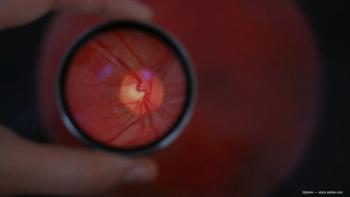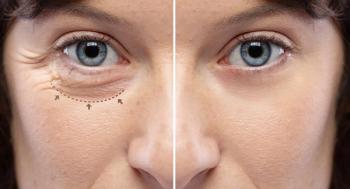
Preclinical study suggests synaptic regeneration may offer new pathway to treat glaucoma
Key Takeaways
- SPG302 demonstrated significant improvement in retinal ganglion cell survival and axonal integrity in a murine glaucoma model.
- The compound's synaptic regenerative activity offers a novel therapeutic approach beyond current intraocular pressure-targeting treatments.
In this murine model of glaucoma, SPG302 was administered daily to 3-month-old mice for 8 weeks.
A new study published in Experimental Eye Research reported that the preclinical results achieved with SPG302 (Spinogenix, Inc.) “provide initial proof of concept that synaptic regeneration may offer a new approach to treating neurodegenerative diseases of the retina,” according to a press release issued by the company.
In this murine model of
According to the press release, “SPG302 administration significantly improved retinal ganglion cell (RGC) survival and axonal integrity while preserving visual function as assessed by electroretinography, a clinically translatable measure of retinal function. This protective effect was linked to the preservation of retinal synapses as indicated by the normalized expression of synaptic markers.”
Glaucoma is an optic neuropathy that, according to the press release, results in loss of RGCs, the principal output neurons of the retina that give rise to axons of the optic nerve, and early and progressive loss of glutamatergic synapses on RGCs that is thought to disrupt their function and contribute to glaucomatous degeneration.
SPG302 may prove to be another potential treatment, considering that glaucoma currently is addressed by targeting the intraocular pressure elevations. “Observations that dendritic and synaptic deficits in RGCs are among the earliest indicators of glaucomatous damage during increased IOP and in other contexts raise the prospect that synaptic regeneration may offer a new and broadly relevant therapeutic approach,” according to the press release.
Regarding SPG302, the company also pointed out that the synaptic regenerative activity of SPG302 represents a first-in-class approach to treating these diseases and has the potential to reverse declines in cognitive, respiratory, and motor function. SPG302, an investigational therapeutic, is being evaluated in clinical trials in 3 disease indications: Alzheimer’s disease in a phase 2 clinical trial (
In commenting on the results of the preclinical study, Stella Sarraf, PhD, MD, Chief Executive Officer and Founder of Spinogenix, said, “The study results help validate the idea that retinal synapse loss is a critical step in glaucoma pathogenesis, and they provide a foundation for positioning SPG302 in glaucoma and potentially other synaptopathies of the retina. We are looking forward to using these findings to advance to a clinical program and bring a new treatment modality to the millions suffering from glaucoma.”
Robert N. Weinreb, MD, an investigator of the study at the University of California, San Diego, and a member of Spinogenix’s scientific advisory board, stated, “Research on glaucoma has been increasingly focused on identifying novel therapeutic strategies for protecting the optic nerve. The results obtained with SPG302 are encouraging, as they suggest that protection of retinal ganglion cells can be achieved by reversing synapse loss with a rapid-acting, clinical-stage compound. I am hopeful that SPG302 will provide a neuroprotective option in glaucoma and potentially other diseases of the retina.”
Based on the study results, the company is hopeful that glaucoma and vision loss could be slowed down and prevented by reversing synapse loss and will lead to a clinical development program.
Reference
Bastola T, Choi S, Shen Z, et al. SPG302 protects retinal ganglion cells and preserves visual function by preserving synaptic activity in a mouse model of glaucoma. Exp Eye Res. 2025;261:110640;
https://doi.org/10.1016/j.exer.2025.110640
Newsletter
Don’t miss out—get Ophthalmology Times updates on the latest clinical advancements and expert interviews, straight to your inbox.









































